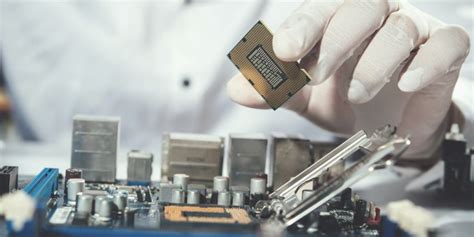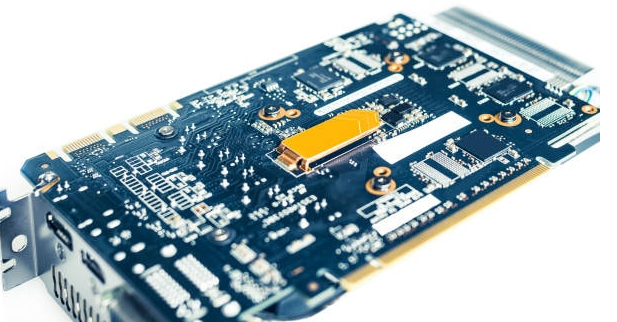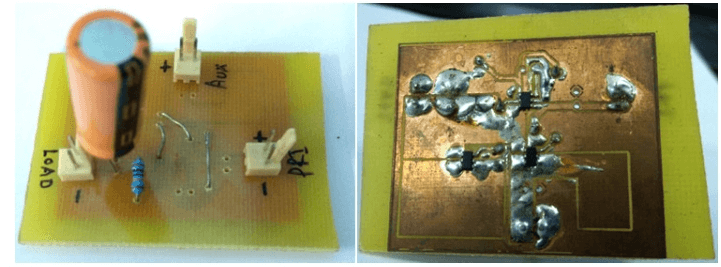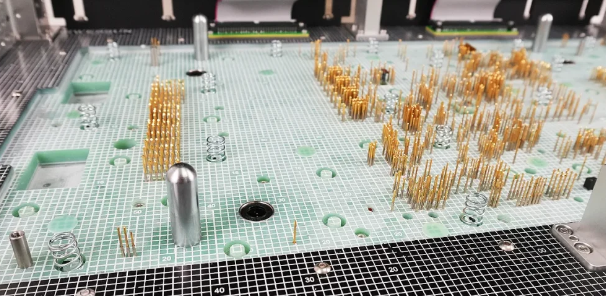Streamlining Contract Manufacturing for Electronic Assembly Success
Key Takeaways
In the competitive landscape of contract manufacturing for electronic assembly, understanding the key takeaways that can drive success is essential. One of the primary components is the significance of pcb assembly and pcba; ensuring that these processes are streamlined can lead to greater efficiency and reduced production times. Companies should focus on implementing best practices, such as effective communication among stakeholders and regular assessment of manufacturing processes, to optimize production workflows. Additionally, addressing common challenges—like quality control and supply chain disruptions—is critical. Innovative technologies, including automation and advanced data analytics, are transforming electronic assembly processes, making it possible to respond quickly to market demands. By evaluating potential partners carefully, businesses can ensure robust collaboration that enhances overall operational success. These strategies collectively empower manufacturers to adapt and thrive in an evolving marketplace while achieving excellence in pcb assembly and pcba outcomes.
Introduction to Contract Manufacturing in Electronic Assembly
Contract manufacturing has emerged as a vital component in the world of electronic assembly, shaping how businesses address the complexities of production. Within this realm, pcb assembly and pcba are central to achieving efficiency and cost-effectiveness. The contract manufacturing model allows companies to outsource manufacturing processes, including design, assembly, and even testing, enabling them to focus on their core competencies while leveraging specialized expertise.
By partnering with skilled manufacturers, firms can benefit from advanced technology and established supply chains, which are crucial for managing the intricate processes involved in electronic assembly. This partnership not only reduces operational costs but also enhances time-to-market—a critical factor in the rapidly evolving tech landscape.
Consider this table that illustrates key advantages of contract manufacturing in electronic assembly:
| Advantages | Description |
|---|---|
| Cost Savings | Reduction in overhead and labor costs through outsourcing. |
| Access to Expertise | Leverage specialized knowledge in pcb assembly from experts. |
| Increased Flexibility | Ability to scale production up or down based on demand. |
| Focus on Core Competencies | Allows businesses to focus on design and marketing aspects. |
In conclusion, understanding the fundamentals of contract manufacturing within electronic assembly sets the foundation for successful collaborations that drive innovation and efficiency. As companies navigate this landscape, it becomes clear that choosing the right partner for pcba services could significantly impact their competitive edge.
Key Components of an Effective Contract Manufacturing Strategy
In the realm of contract manufacturing for electronic assembly, several vital components converge to create a robust strategy. First and foremost, clarity in communication is essential, as it fosters a transparent workflow and ensures that all stakeholders are aligned on project objectives and timelines. This is particularly crucial in pcb assembly projects where precision and attention to detail are paramount. Moreover, establishing well-defined quality standards helps mitigate risks associated with defects in pcba, ultimately leading to higher customer satisfaction.
Another critical element is the selection of appropriate technology and tools for efficiency. Leveraging advanced manufacturing processes not only streamlines production but also enhances accuracy in electronic assemblies. Integrating automation into the production lines can significantly reduce cycle times while maintaining quality, showcasing how innovation can play a transformative role in contract manufacturing.
It is also important to build strong relationships with suppliers and partners. Collaboration nurtures a deeper understanding of each party’s strengths and capabilities, contributing to seamless integration during the pcba process. As noted in industry practices, “A successful partnership stems from mutual trust and shared goals.”
Lastly, regular assessments of performance metrics are indispensable for continuous improvement. By employing data analytics to evaluate different stages of the manufacturing process, companies can identify bottlenecks early on and implement corrective measures swiftly. This proactive approach not only boosts operational efficiency but also positions organizations favorably within a highly competitive landscape.
By integrating these key components into their strategies, companies can significantly enhance their effectiveness in contract manufacturing for electronic assembly, achieving successful outcomes that resonate throughout their operations.
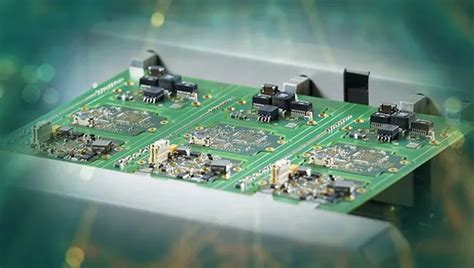
Best Practices for Enhancing Efficiency in Electronic Assembly
In the rapidly evolving field of electronic assembly, adopting best practices is crucial for maintaining a competitive edge. First and foremost, implementing streamlined processes for PCB assembly can significantly reduce production time and costs. Utilizing advanced techniques such as just-in-time manufacturing can facilitate efficient inventory management, ensuring that components are available when needed without incurring unnecessary overhead. Additionally, leveraging modern pcba technologies allows manufacturers to optimize their workflows by incorporating automation and robotics, which minimize human error and enhance precision.
Moreover, fostering strong communication and collaboration among all stakeholders in the supply chain is vital. Regular updates and feedback loops can help identify potential bottlenecks early on, leading to proactive solutions. Manufacturers should also invest in continuous training for their workforce to keep pace with the latest advancements in tools and techniques. Emphasizing the importance of quality control at every stage of production is essential; utilizing inspection technologies such as X-ray or automated optical inspection can catch defects early, ensuring that the final products meet the highest standards.
In summary, by focusing on these best practices, manufacturers can enhance efficiency in electronic assembly processes, paving the way for successful contract manufacturing outcomes while addressing market demands effectively. This approach not only improves productivity but also enhances customer satisfaction through timely delivery of high-quality products.
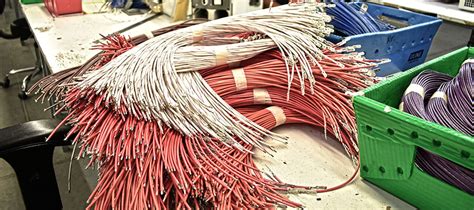
Addressing Common Challenges in Contract Manufacturing
In the realm of contract manufacturing, especially in electronic assembly, organizations face a myriad of challenges that can impede their success. One primary difficulty is maintaining consistent quality in pcb assembly processes. Variability in components or assembly techniques can lead to defects that compromise the product’s integrity. Furthermore, navigating the complexities of supply chain management can pose significant hurdles. Timely delivery of parts is crucial, and any disruption can delay production schedules and inflate costs. Companies must also ensure effective communication and collaboration with their pcba partners to avoid misunderstandings that could hinder progress. Additionally, staying abreast of industry advancements is essential; failing to adopt innovative technologies may result in inefficiencies that competitors easily exploit. By systematically addressing these challenges—focusing on quality control, supply chain optimization, and proactive communication—organizations can significantly enhance their effectiveness in contract manufacturing for electronic assembly. This strategic approach not only mitigates risks but also fosters a robust partnership environment conducive to achieving long-term success.

Innovative Technologies Transforming Electronic Assembly Processes
The landscape of contract manufacturing in electronic assembly is evolving rapidly, largely due to advancements in technology. One of the most notable innovations is the integration of automated processes such as robotic arms and AI-driven assembly lines, which enhance the efficiency and accuracy of pcb assembly or pcba. These technologies not only minimize human errors but also expedite production timelines significantly. Additionally, smart factories utilizing the Internet of Things (IoT) facilitate real-time monitoring and data analytics, enabling manufacturers to quickly identify bottlenecks and optimize workflows. With these technological advancements, companies can achieve higher production volumes while maintaining quality standards, thus making a substantial impact on overall operational efficiency. Furthermore, the introduction of advanced materials and techniques like 3D printing contributes to more innovative designs and reduces waste in the manufacturing process. As organizations continue to adopt these groundbreaking technologies, they are better positioned to compete in a dynamic global market, ensuring long-term success in electronic assembly endeavors.

Evaluating Potential Partners for Effective Collaboration
When selecting a partner for contract manufacturing in the realm of electronic assembly, it is vital to assess their capabilities and alignment with your business objectives. One key factor to consider is the partner’s experience in PCB assembly or PCBA, as this plays a crucial role in ensuring quality and efficiency. Look for partners who exemplify a strong track record of delivering high-quality assemblies on time, as this directly impacts your product’s market readiness. Additionally, evaluate their technological capabilities; partners with advanced automation and innovative manufacturing processes are more likely to enhance production efficiency. Collaborative flexibility can also determine the success of this relationship—ensure your potential partner is open to engaging in dialogue about design changes and process improvements. Ultimately, fostering a lasting partnership hinges on mutual objectives, shared values, and a commitment to maintaining open communication. By diligently vetting potential partners through these criteria, you can position your project for success, ensuring smooth operations in the competitive landscape of contract manufacturing for electronic assemblies.
Case Studies: Success Stories in Contract Manufacturing
Examining real-world examples provides valuable insights into the effectiveness of contract manufacturing in the electronic assembly sector. One remarkable case is that of a leading company that effectively utilized pcb assembly services to enhance its production capabilities. By collaborating with specialized pcba providers, this firm not only optimized its supply chain but also improved the quality and reliability of its components. Another noteworthy example involves a startup that faced considerable market competition. Through strategic partnerships with established manufacturers, they leveraged innovative technologies to streamline their processes, leading to significant cost reductions and faster time-to-market for their products. These success stories highlight the importance of selecting the right partners and integrating cutting-edge solutions in the contract manufacturing landscape. As businesses navigate the complexities of electronic assembly, these examples serve as a blueprint for achieving operational excellence and remaining competitive in an ever-evolving industry.
Future Trends in Electronic Assembly and Contract Manufacturing
As the landscape of contract manufacturing evolves, several key trends are emerging that can significantly influence the pcb assembly and pcba sectors. One major trend is the increasing integration of automation and artificial intelligence into electronic assembly processes. This shift not only enhances efficiency but also reduces human error, leading to higher quality outputs. Companies are increasingly adopting advanced technologies, such as robotics and machine learning, to streamline assembly lines and facilitate real-time monitoring of production metrics.
Additionally, the demand for smaller, more complex pcba designs is rising, prompting manufacturers to innovate continually. This includes the use of flexible circuit boards and advanced materials that allow for compact designs while maintaining functionality. As sustainability becomes a priority, many manufacturers are also focusing on eco-friendly practices in their production processes, which can help reduce waste and lower costs.
Moreover, global shifts in supply chain dynamics are pushing contract manufacturers to diversify their sourcing strategies. Companies are now looking beyond traditional suppliers to ensure resilience against potential disruptions. This agile approach not only aids in risk management but also allows for quicker responses to market changes.
Lastly, effective collaboration with partners is becoming increasingly essential. By fostering strong relationships with suppliers and technical partners, companies can enhance their capabilities and innovate more effectively within the pcb assembly landscape.
In summary, recognizing these trends offers a competitive edge as they shape future practices in both electronic assembly and contract manufacturing. Emphasizing adaptability and innovation will be crucial in navigating these changes successfully.
Conclusion
In summary, the landscape of contract manufacturing for electronic assembly is continuously evolving, and staying ahead requires a commitment to best practices and innovative solutions. As outlined throughout this article, enhancing efficiency in pcb assembly and pcba production is paramount. Organizations must prioritize effective collaboration with partners who understand the complexities of electronic assembly processes. By leveraging advanced technologies, companies can streamline operations, reduce costs, and improve the quality of their products. Additionally, addressing common challenges head-on—such as supply chain disruptions and quality control issues—will empower manufacturers to thrive in a competitive environment. Ultimately, the future of contract manufacturing in this field will rely on agility, strategic planning, and a proactive approach to emerging trends.
FAQs
What is contract manufacturing in electronic assembly?
Contract manufacturing in electronic assembly involves outsourcing the production of components, such as pcb assembly or pcba, to third-party companies. This allows organizations to leverage specialized expertise and technology while focusing on their core competencies.
What are the benefits of using contract manufacturing for electronic assembly?
The benefits include cost efficiency, access to advanced technology, and the ability to scale production based on demand. By outsourcing, companies can reduce labor costs and minimize overhead expenses related to in-house manufacturing.
How can I enhance efficiency in my electronic assembly operations?
To enhance efficiency, consider adopting best practices such as standardizing processes, investing in automation technology, and fostering strong communication with your contract partners. Continuous improvement strategies can also streamline operations significantly.
What are common challenges faced in contract manufacturing?
Common challenges include quality control issues, communication gaps between partners, and potential delays in production schedules. Addressing these challenges proactively through regular monitoring and feedback mechanisms can help mitigate risks.
Which innovative technologies are transforming electronic assembly processes?
Technologies such as automation tools, smart machinery, and advanced pcba inspection systems are transforming the landscape. These innovations help improve precision while increasing throughput and reducing waste in the manufacturing process.

